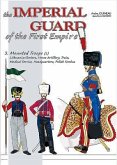The Battle of Waterloo was one of the most horrific actions fought during the Napoleonic Wars. There have been several studies of battlefield injuries and the field care that casualties received during the campaign of June 1815. However, what happened to the many thousands of injured men left behind as the armies marched away is rarely discussed.In June 1815, around 62,000 Allied and French wounded flooded into Brussels, Antwerp, and other towns and cities of the Kingdom of the Netherlands and swamped the medical services. These casualties were eventually cared for by a wide mix of medical personnel including hundreds of ¿Belgian¿ surgeons, most of whom had trained in the French Service de Sant¿nd who assisted in the dispersal, treatment, and rehabilitation of thousands of casualties after the battle.New data concerning the fate of the thousands of Allied and some French casualties has emerged from the library of the University of Edinburgh. This has revealed a collection of over 170 wound sketches, detailed case reports, and the surgical results from five Brussels Hospitals. The sketches were carried out by Professor John Thomson, who held the first Regius Chair in Military Surgery appointed by the University of Edinburgh. Most accounts are of Allied wounded, but certainly not all. The accounts, drawings and surgical results dramatically alter our understanding of the management of military wounded in the Georgian army.








